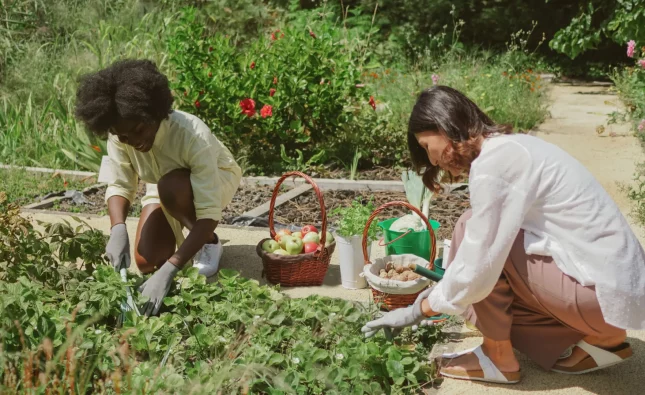
Subtitle 1: Understanding the Benefits of Growing Organic Vegetables
Growing your own organic vegetables at home offers numerous benefits. Firstly, organic vegetables are free from harmful pesticides and chemicals, making them healthier and safer to consume. Secondly, cultivating your own vegetables allows you to have control over the entire growing process, ensuring the highest quality produce. Lastly, it promotes sustainability and reduces your carbon footprint by minimizing transportation and packaging waste.
Subtitle 2: Choosing the Right Location and Preparing the Soil
Selecting the right location is crucial for successful vegetable gardening. Look for an area that receives at least six hours of direct sunlight daily. Ensure the soil is well-draining and rich in organic matter. If the soil is heavy or clayey, consider adding compost or organic matter to improve its texture and fertility.
Subtitle 3: Selecting the Right Vegetables to Grow
When starting out, it’s best to choose vegetables that are easy to grow and suited to your climate. Some beginner-friendly options include tomatoes, lettuce, radishes, carrots, and herbs like basil and parsley. Research the specific requirements of each vegetable, such as sunlight, water, and spacing, to ensure optimal growth.
Subtitle 4: Starting from Seeds or Seedlings
Decide whether you want to start your vegetables from seeds or purchase seedlings from a nursery. Starting from seeds allows for a wider variety of vegetable options, but it requires more time and effort. Seedlings, on the other hand, provide a head start and are easier to manage for beginners. Follow the instructions on the seed packets or consult gardening resources for guidance on planting depth and spacing.
Subtitle 5: Providing Adequate Water and Nutrients
Watering is essential for healthy plant growth. Most vegetables require consistent moisture, but be careful not to overwater, as it can lead to root rot. Water deeply and infrequently, allowing the soil to dry out slightly between waterings. Additionally, organic fertilizers or compost can be used to provide essential nutrients to the plants. Follow the recommended application rates and avoid over-fertilizing, as it can harm the plants.
Subtitle 6: Managing Pests and Diseases Organically
One of the challenges in organic gardening is managing pests and diseases without the use of synthetic chemicals. Encourage beneficial insects like ladybugs and lacewings that prey on pests. Use physical barriers like netting or row covers to protect plants from insects. Regularly inspect your plants for signs of pests or diseases and take appropriate action, such as handpicking pests or using organic pest control methods.
Subtitle 7: Harvesting and Enjoying Your Homegrown Vegetables
Harvesting your homegrown vegetables is a rewarding experience. Each vegetable has its own harvesting time, so refer to specific guidelines for each plant. Harvesting at the right time ensures the best flavor and nutritional value. Enjoy the fruits of your labor by incorporating your freshly harvested organic vegetables into delicious meals for you and your family.
In conclusion, growing your own organic vegetables at home is a fulfilling and sustainable endeavor. By following these beginner-friendly steps, you can embark on a journey of self-sufficiency, health, and environmental consciousness. Happy gardening!










